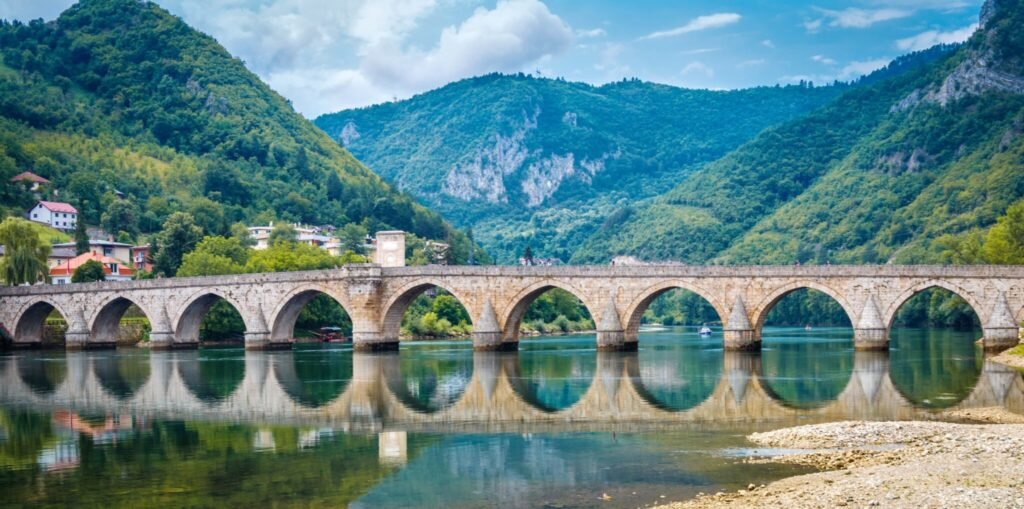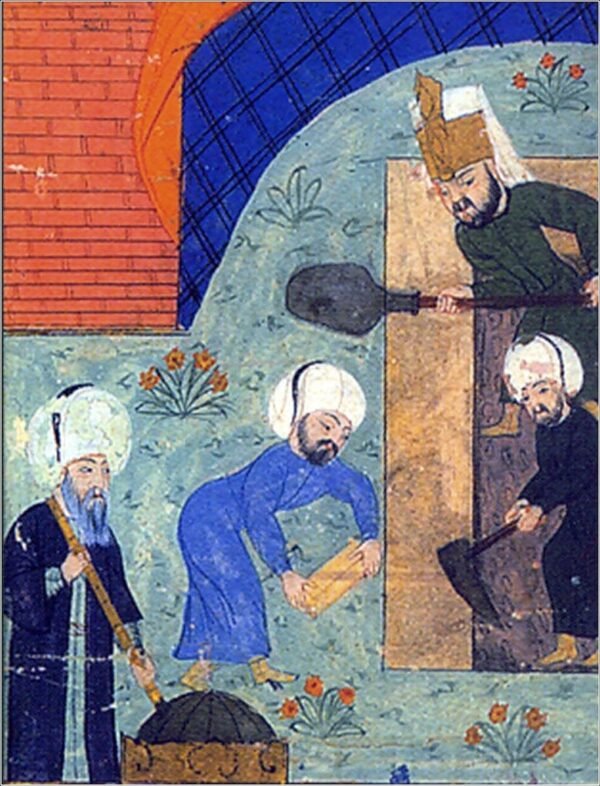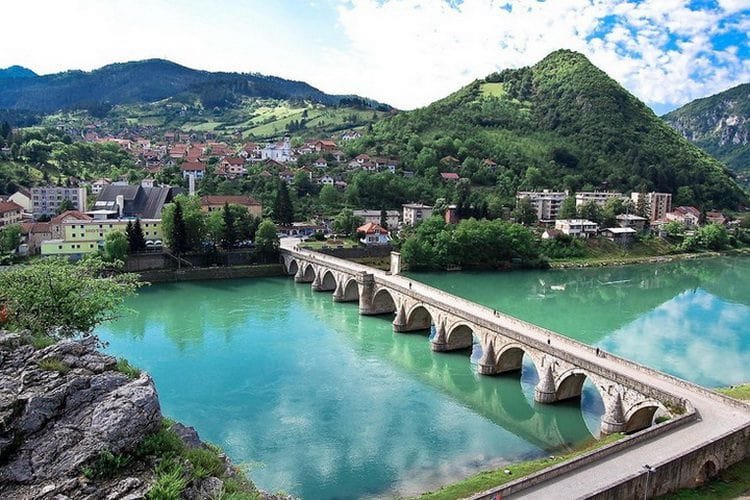You have probably heard about the popular novel “The Bridge on the Drina” by Ivo Andrić, for which he received the Nobel Prize for Literature. Well, today you will learn the history of the famous bridge which inspired Andrić to write his novel.

Višegrad is a small town in eastern Bosnia and Herzegovina at the border with Serbia. It is located on the Drina river, where the Rzav river is flowing into the Drina. This town is located on a beautiful bridge on the Drina river, constructed in Ottoman times. It was completed in 1577 by the Ottoman architect Mimar Sinan and on the order of the Grand Vizier Mehmed Pasha Sokolović.
Who were Mimar Sinan and Mehmed Pasha Sokolović?
efore we start a tale about the bridge we will say who were people responsible for the construction of the bridge were.
Mimar Sinan was the chief Ottoman architect (in Turkish architect means mimar) and civil engineer for sultans Suleiman the Magnificient, Selim II, and Murad III. He was responsible for the construction of more than 300 major structures and other more modest projects in the Ottoman empire. His apprentices later constructed the Sultan Ahmed Mosque in Istanbul and the Old Bridge in Mostar.

Mehmed Pasha Sokolović was an Ottoman statesman most notable for being the Grand Vizier of the Ottoman Empire. He was born in the Ottoman Herzegovina Sandjak into an Orthodox Christian family and at an early age, he was taken to Istanbul as part of the Ottoman system of devshirme (it was a system of recruiting Christian boys to be raised to serve as janisary – elite military unity. Some of these boys did not go to the janissaries but stayed at the court). He rose through the ranks of the Ottoman imperial system and became Grand Vizier under three sultans. Višegrad was his hometown.

The bridge
The bridge is called Mehmed Pasha Sokolović’s bridge. Construction of the bridge took place between 1571 and 1577. It was built at the place where the road connected Bosnia with Constantinople above the Drina river. As it is said, the construction of the bridge was entrusted to the famous architect Mimar Sinan, who was one of the greatest architects in the world.
The bridge was built as an endowment (waqf) of Mehmed Pasha and is an amazing example of Ottoman architecture. It is characteristic of the apogee of Turkish monumental architecture and civil engineering. The bridge numbers 11 masonry arches, with spans of 11 to 15 meters, and an access ramp at right angles with four arches on the left bank of the river. The length of the bridge is 179.5 and is a representative masterpiece.
In the middle of this bridge stood a wooden tower, the time of its creation is unknown, and it was demolished in 1886. The tower was a guardhouse with a passage below it, which was closed by strong oak doors on both sides. There were several small cannons called shibe on the tower. On the bridge, there were two verses with engraved years – the first 971-/1571, and the second 985/1577. The bridge withstood several large floods, the largest of which was the one in 1896 when the level of the Drina river was 1.60 m above the bridge.

It is known that this bridge was repaired around 1664, then in 1875, 1911, 1939, and 1940. During the retreat of the Austrians from Višegrad in 1914, one shaft was destroyed, and the following year, when the Serbian army left Višegrad, another one was destroyed. This state of the bridge remained until 1939 when it was restored. From 1915 to 1939, an iron structure stood on the destroyed part of the bridge, over which traffic was carried. During the retreat of the Germans in October 1943, that part was also destroyed.
The middle of the bridge – the center pile of the bridge, was expanded and soon became a popular meeting place for people from Višegrad and its surroundings. UNESCO included the bridge in its 2007 World heritage list. The UNESCO summary states: “The unique elegance of proportion and monumental nobility of the property as a whole bear witness to the greatness of this style of architecture.”
Ivo Andrić’s “The bridge on the Drina”
Ivo Andrić is the only Nobel laureate from former Yugoslavia. His novel called “The Bridge on the Drina” is a historical novel that revolves around the bridge which stands as a silent witness to history from its construction by the Ottomans in the mid-16th century until its partial destruction during World War I. The story follows about 400 years of history around the bridge and covers the Ottoman and Austro-Hungarian occupations of Bosnia and Herzegovina, with special reference to the lives and relations of local inhabitants, especially Serbs and Muslims.

We will end this blog post with a quote from Andrić’s novel that says: “They entered there into the unconscious philosophy of the town; that life was an incomprehensible marvel since it was incessantly wasted and spent, yet none the less it lasted and endured ‘like the bridge on the Drina’.”
Visit our social media profiles as well:
